#transorientation
Text



୨୧ TransTurigirl ノ TransLesboy ノ TransGaybian



୨୧ TransBiLes ノ TransPanles ノ TransPlyLes



୨୧ TransOmniLes ノ TransMSpecLes ノ TransSapphillean



୨୧ TransBiGay ノ TransPanGay ノ TransPlyGay



୨୧ TransOmniGay ノ TransMSpecGay ノ TransMesque

omg tranzorientation flagz!! yippee!!!!!!!!!! alzo my reqz are open... :3
#🍬 ◟coinz!#pro radqueer#transid#pro transid#transx#transid safe#pro radq#pro transx#radqueers please interact#rq community#radqueer#rq safe#rq 🌈🍓#pro rq 🌈🍓#rqc🌈🍓#rq please interact#transid please interact#transid community#mogai#transorientation
28 notes
·
View notes
Text
i love transorientation people
10 notes
·
View notes
Text
TransOrientationGenderic: a xenogender in relation to being transorientation



#☎️.gif#📺.jpg#🎸.png#TransOrientationGenderic#TransOrientationGender#transorientation#transidgender#xenogender#transid#gender
7 notes
·
View notes
Text
A lot of transorientation flags, for anyone who wants them
























In order:
transveldian, transbi, transpan
transvincian, transcinthean, transomni
transachillean, transsapphic. transpoly
transromeric, transjulietian, transenbian
transdiamoric, transmspec, transstraight
transaromantic, transasexual, transaroace
transdemisexual, transdemiromantic, transgraysexual
transgrayromantic, transaroallo, transalloace
89 notes
·
View notes
Text
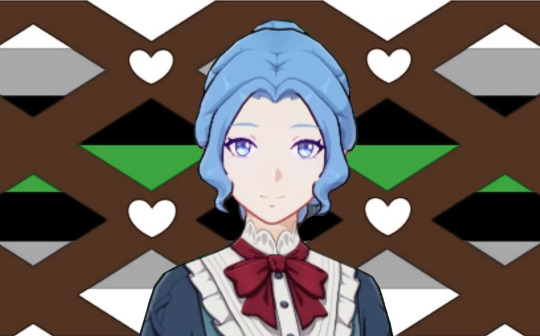
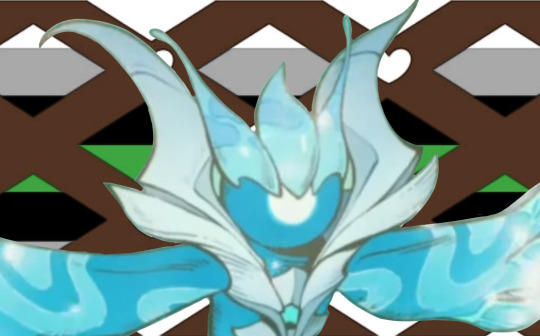
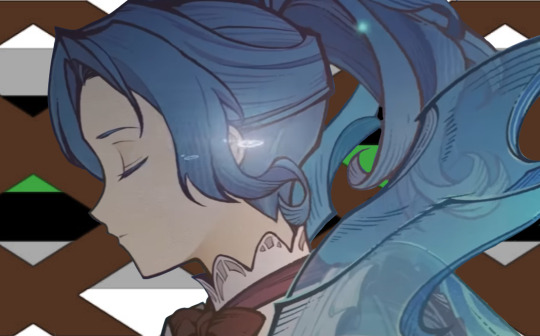

Callirhoe from Genshin Impact is transalloromantic coded!
Flag!
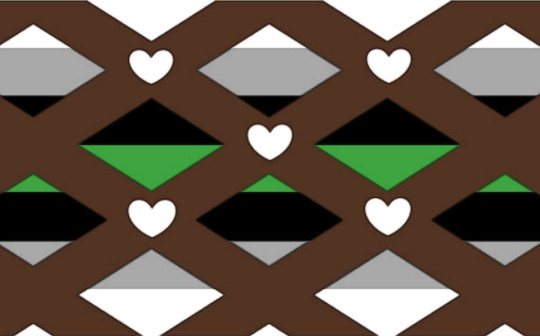
10 notes
·
View notes
Text
TransAttraction/Transorientation

Transattraction/Transorientation: an identity for those who feel they should have a certain orientation or be attracted to certain categories of individuals that they are not.
31 notes
·
View notes
Note
I love reading your worldbuilding posts! It’s so fun to have that extra context for the story. Your recent post about sub-circling got me thinking about the issues trans-oriented subs might run into trying to join something that is designated Strictly For Subs in such a deeply-rooted biological and cultural way. I guess I wanted to poke you for your thoughts on like, HOW ingrained in biology and instincts that kind of thing is, bc I think it’d be kinda fun to examine the particular nuances of that kind of inter- and intrapersonal conflict 🤔 It also got me wondering if there would be any anti-trans orientation movements who see that as like a predatory endangerment to sub spaces? I guess I’m just recreating terfs tho lmao. Er sorry if that’s too heavy or invasive of a topic? You can feel free not to answer that one 😵💫
Also not related, but it was such a treat seeing Aizawa in your recent chapter and I love how you write him! I was curious if you were ever thinking about writing an erasermic fic in this verse, since their relationship is so unique for your au! 💓
ahhhh thank you!! i usually dislike worldbuilding bc it feels so overwhelming, but i’m having fun with it here so far
i….actually had not thought about trans rights vs the sub-circle tho, THAT’S a thought. i will say chapter 8 of Free Falling will have a little bit about sub circles in it, and i did include a line where someone asks twice (trans switch, bio dom in this au) if he’s going to stay. twice declines, but the offer is there. HOWEVER, that is the league and not society at large, so in a less trans-accepting space it would probably be different.
i haven’t written about it directly (and probably won’t, tbh? at least, i have no plans to rn, never say never), but i DO imagine there are both run of the mill transphobes and a terf-adjacent group in this ‘verse. hm. like actual terfs they’d probably be very “submissive rights” but be so transphobic that it loops back around to oppression.
i’ve done a fair amount of waffling on how biologically ingrained stuff is, because on the one hand it’s fun if the answer is “very,” but on the other hand, i’m trans and i’m wary of bioessentialism.
so my current stance is that it’s not as biologically ingrained as subspace/domspace itself, but it’s still important for things like social development. think of it as a kid growing up isolated from their peer group for whatever reason. they’re probably going to have trouble connecting with people their own age, they might pick up some strange habits, they’ll likely have gaps in their knowledge like not knowing pop culture. but overall (assuming nothing else bad happened), they’ll be okay, physically and mentally. not to trivialize that experience as i’m sure it’s very difficult, but there’s nothing life-threatening about it. and like i mentioned, a sub circle takes some level of intention; it’s not something you can trip into or be forced into against your will like subspace.
that said, it is Very culturally important. not something enforced, but if you told someone you never had a circle as an adult they’d probably give you a “wtf” look. a lot of the importance comes from the defensive aspect and how dangerous it can be to break a circle up. they’re respected because not respecting them is a good way to get attacked.
so anyway all of this is very long-winded and a bit stream-of-consciousness, but in conclusion i don’t think most people would welcome a trans sub/switch into a circle. like women’s bathrooms, except there’s no cultural expectation of politeness/not rocking the boat (also since when are women’s bathrooms some super culturally important place….but i digress). i feel like a trans sub would also have a lot of internalized Feelings about it even if they were allowed to join bc of all the messaging about how a dom near a sub circle is the Worst Thing Ever.
…..and now i’m thinking that would be fun to write. hm. back burner.
but!! yes!!! very cool questions defo a lot of food for thought. and to answer your last question about erasermic—i definitely want to write about them in this au!! i don’t have any specific ideas at the moment but i do adore their relationship and i very much want to delve into it. since they’ve adopted hitoshi i could also explore what raising a teenager in this world looks like….very fun
#asked and answered#worldbuilding#sub circle#aizawa shouta#transorientation#d/s au#bnha#i also want to write more of aizawa and class a#love a good dadzawa#im also 👀 at aizawa’s capture scarf hmmmm could do somethin with that ajshajsgjasg
3 notes
·
View notes
Note
C[]uld y[]u pr3tty pl3az3 mak3 a Tr1zL3zb[]y and / or a Tr1zTur1g1rl flags? Thank y[]u z[] zup3r v3ry much!!! (*´▽`*ʃ♡ƪ)
Plan text: Could you pretty please make a TrisLesboy and / or a TrisTurigirl flags? Thank you so super very much!!! (*´▽`*ʃ♡ƪ)


୨୧ TrisLesboy / TranCisLesboy + TrisTurigirl / TransCisTurigirl
a transID + cisID (trisID) where one wishes to or identifies as a trans and cis lesboy / turigirl


#— new video⠀♡ ( coining )#pro radq#radqueer#radqueer safe#rqc🌈🍓#rqc#rq 🌈🍓#rq safe#rq please interact#rq community#radq#radqueer community#radqueer friendly#radqueer please interact#pro rq 🌈🍓#rqc 🌈🍓#radqueer 🌈🍓#pro radqueer#transid#pro transid#transx#transid safe#pro transx#radqueers please interact#transid please interact#transid community#transid coining#trisID#transorientation
8 notes
·
View notes
Text
Up next for the fandom sleepyqueers: Brian and Hoodie!
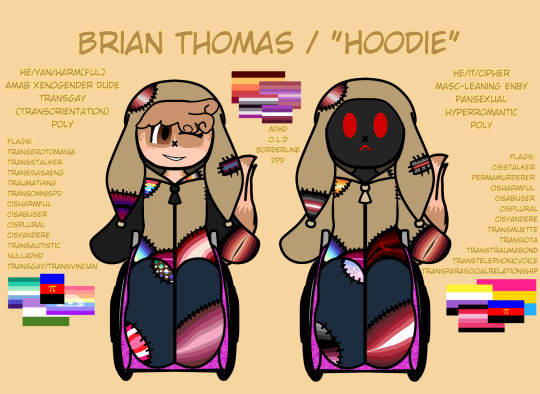
Brian:
he/yan/harm(ful)
Amab xenogender dude
Transgay (transorientation)
Poly
Flags:
Transerotomania
Transstalker
Transsasaeng
Traumathing
Transomnispd
Cisharmful
Cisabuser
Cisplural
Cisyandere
Transorientation (transgay/transvincian)
Transautism
NullADHD
Hoodie:
he/it/cipher
Masc-leaning enby
Pansexual
Hyperromantic
Poly
Flags:
Transtelephonicvoice
Transtraumabond
Cisstalker
Transparasocialrelationship
Permamurderer
Cisharmful
Cisabuser
Cisplural
Cisyandere
Transmuette
Transiota
Middle flags:
ADHD
OLD (Obsessive Love Disorder)
Borderline
DPD
@transramcoa @c0smicjayy
Species creds to @rainbow-strawberry-sherbert
Design notes under the cut!
Brian's a very adventurous guy, often getting into dangerous situations. Often enough, he ends up injured - in fact, he recently ended up with permanent damage to his torso, so his legs don't work anymore! Nevertheless, this won't stop him from going on as many adventures as possible - he just takes a friend with him now!
Hoodie is... Less than enthused at the loss of mobility, but he gets around it! Despite Brian's taste in wheelchair design, Hoodie still manages to get around relatively unnoticed and without a sound. Brian is not often aggressive, but that's because Hoodie holds those symptoms, so he's extra aggressive. He's careful not to seriously hurt his friends, though! He's super protective of them!
Both of them are incredibly possessive over Tim and Masky, so that's who they usually drag along on adventures! It's also important because Brian holds onto Tim's seizure meds, so they can't be apart for too long.
What? Oh, Brian holds onto them because the switching between Tim and Masky often leads to Tim losing or forgetting them! There's absolutely no other reason. The fact that it means Tim has to depend on Brian to get them is an unfortunate side effect and nothing else (/lying).
Both Brian and Hoodie are stronger than they appear, easily able to lift and carry others. They're doglikes (dog-esque traits), and their loyalty reflects that.
#pro rq 🌈🍓#rq community#rq please interact#rq safe#rq 🌈🍓#rqc🌈🍓#radqueer#pro radq#pro radqueer#radqueer safe#radqueers please interact#radqueer community#radqueer please interact#sleepyqueers#rq sleepyqueer#marble hornets#hoodie marble hornets#brian thomas
27 notes
·
View notes
Text
TransReoriented/TransAdapt-Oriented is a transorientation that means transition to being reoriented/adapt-oriented

#☎️.gif#📺.jpg#🪔.png#TransReoriented#TransAdapt-Oriented#TransAdaptOriented#Reoriented#Adapt-Oriented#transorientation#orientation#transid
6 notes
·
View notes
Text

Transallosexual flag. Format taken from @transx-mogai-cafe.
#transorientation#does this count as mogai? no idea#radqueer coining#pro transid#radqueer#transid#made this because. me hehe
69 notes
·
View notes
Note
do translesboy and transgaygirl, please

Transgaygirl
A transorientation id where one desires to be a gaygirl
(Flag was both heavily inspired and partially colour picked from the original gaygirl flag, so credits to the original creator)

Translesboy
A transorientation id where one feels as though they should be a lesboy
(This flag was also heavily inspired by and colour picked from the original flag, credits again go to the original creator)
If either of these have already been coined please consider this a reflag!!
#radqueer#rq 🌈🍓#rqc🌈🍓#pro rq 🌈🍓#rq coining#rq please interact#rq community#rq safe#radqueer coining#transid#radqueer please interact#radqueer safe#pro radqueer#transid please interact#transid coining#transid safe#transid community
25 notes
·
View notes
Text



{ ‘ How did being a radqueer affect me? ’ }
[pt: { ‘ How did being a radqueer affect me? ’ } /end pt]
Hi Hello Greetings, I am Truffle/Chocerie, I am a former radqueer who ran the blogs @/transm4sc, @/daughterwife, @/sc3n3-v4mp1r3 (e, e, a, i, e)
I'm here to educate folks on how being a radqueer had an extremely negative effect on me and my collective.
Trigger warning for: paranoid meltdowns, mental breakdowns, paranoia, and other things
I was a radqueer for around twoish years, possibly three, I was more active on radqueer-tumblr but was also part of a few radqueer discord servers, mainly RadDates, RadPawzz, and Transid Archive to name a few.
Starting with the more "tame" things, being radqueer caused me to distance myself from my best friend, thankfully after escaping the community, I managed to become close with them once again.
I also had a "us vs them" mentality that is very heavily forced upon every radqueer, I thought that only radqueers would accept me for being a minor with personality disorders and for being an m-spec lesbian, I was wrong, I have found a lovely community on MOGAIblr that accepts me for who I am.
The radqueer community treated everything like a possible transid or paraphilia, stuff like 'oh you have a crush on your teacher? You must be an AAM, only radqueers will accept you!', or 'oh you're not a traumagenic system? You must be transplural, only radqueers will accept you!' And other vile things.
Onto the more heavier, darker things.
Those will be under the cut, read with caution darlings..
Tw: 'consang'/incest, underage sex work, paranoia, pedophilia, beastiality,
The radqueer community groomed me into sending nsfw texts and images to older people and encouraged me to become an underage sex worker.
I was so violently paranoid towards when I left the community that I literally had to take a month long break from discord to stop being terrified of my own fucking breathing.
[pt: own fucking breathing /end pt]
The radqueer community groomed me into flirting and being in an in system consang "relationship" with an alter who I considered my mom/older sister who was 27, for context, I as an alter, am a 14-17 age shifter, that relationship went on for about a year..
I'm surpised I was not hospitalized for how violently paranoid I was, I suffered intrusive thoughts so bad I had to force myself to dissociate so I didn't have a completely breakdown, the radqueer community tried to encourage me to act on my intrusive thoughts/tried to make me think that my intrusive thoughts weren't "that bad".
The radqueer community tried to convince me I was "transDPD" because I exhibit DPD symptoms, they also tried to convince me I was "transorientation to lesbian!1!" even though Im not, Im literally just a lesbian.
If you still think that the radqueer community isn't "that bad", I beg you to take a step back and realize how horrible that community is, I have other former radqueers who have told me about the horrorifying things they witnessed.
Including but not limited to: literally sharing beastiality films, threats towards antis, encouragement of literal pedophilia, encouragement of minors to participate in kink with adults and other things.



#☕{not the host}.#☕{education}.#☕{talking}.#anti radqueer#anti ship#anti trace#anti transage#anti transabled#anti transid#anti transx#anti transautistic#former radqueer
36 notes
·
View notes
Text
Framing Gender Identity Through Masquerade. Hybrid Masculinities in Jimin's Photo-folio
Up until the release of the photo-folio Me, Myself, And Jimin 'ID: Chaos, the performance of Filter for the online concert ON:E has been in the latest years, the most relevant representation of gender performativity for the artist. Jimin made use of visual and dress markers in order to exhibit the ways in which he can play with the idea of destabilizing conventional gender distinctions, but ultimately to ascertain a more conventional masculinity by changing the focus on the sexual undertones of his performance in order to maintain his power over how he is perceived and filtered by the audience. Through the concepts in the photo-folio, he is taking many steps further, committing to a more nuanced portrayal of identity.
This analysis will look at various instances of gender performativity and will identify types of masculinities as taking on different roles in order to demonstrate the way in which Jimin is exerting his subjectivity. Moreover, gender performativity will also be characterized as a form of masquerade and how it becomes a method through which the subject is able to take on those roles, by creating various personas through the use of dressing and how they are used as a metaphor for identity.
By framing these roles as carrying certain visual markers which pertain to a more Western cultural sphere, it is necessary to take into consideration the danger posited by such a position, especially given the fact that masculinities are also influenced by race, class and other, more specific and local classifications. In trying to avoid turning the analysis into one which might be framed as orientalist thinking, I will use Adam Geczy's definition of transorientalism (2019), in which ''a stable cultural identity is really an agglomerate of signs, which, as with any linguistic system, are in the constant process of modification and change''. Globalization, as much as it's a term used more predominantly for the economic sphere, it exists culturally as well, especially given the present use of online connectiveness and the facilitation of crossing physical and metaphorical borders. The position taken in this essay as well, as Geczy understands it, is that identities become a blend or a composite, not parallel to one another. These identities can be material and cultural and can coexist ''in different frameworks at different times''. Such distinctions are made possible today, as they encompass a wider meaning of cultural exchanges, and not just one in which the West is imposing its presence and power over an imaginary East, as Edward Said conceptualized it. These nuances are important because transorientalism explains the fact that cultural identities can be transacted, and not just overpowered by a dangerous West over a helpless East. It also helps in steering away from the danger of nationalistic discourses over identities that disregard the influence of globalization and how identities can reach outside imaginary borders.
Hybrid masculinities versus hegemonic masculinities
Contemporary understandings of masculinities are nowadays understood as hybrids. More often than not, it is applied to white, middle class heterosexual men who borrow elements of non-hegemonic masculinities in order to construct their gender identities through the situational use of feminine or gay aesthetics or more precisely, marginalized identities (Bridges, Pascoe 2014). The vital question that needs to be asked in this context is if hybrid masculinity maintains or actually challenges gender inequality and if ultimately, remains a tool that keeps intact the gender order, or what it's called masculine balance (Young 2017). In most cases, hegemonic masculinity remains intact in situations in which men are able to mark their bodies, usually through dress, in order to perform a hybrid gender identity, but only in situations that allows them the freedom to do so, while at the same time, having the privilege to de-mark their gender performances when it's no longer suited, usually in the cases of reestablishing their hegemonic, normative masculinity and consequently, their heterosexuality.
The concept of hybrid masculinities has been recently used in an analysis of G-Dragon's gender identities across various media contents, specifically because gender acts are also situational (Kim & Lopez, 2021). G-Dragon's case is relevant for this analysis, as it's a case study of a K-Pop idol known for his thought-provoking gender performances. For Kim and Lopez, K-Pop has fashioned and promoted what they call manufactured versatile masculinity – one in which soft masculinity can coexist within the paradigm of conventional hegemonic masculinity. For the authors, G-Dragon's appearances in some music videos and photoshoots may appear and sometimes actually are non-conforming, but they always end up being balanced with situations in which the artist is reaffirming his normative, heterosexual masculinities. If G-Dragon is queering his gender in spaces which offer him that freedom, specifically those that require a more artistic and creative medium, such as a photoshoot, a public appearance on a television program or a performance during a concert become the spaces in which he balances that queerness by stressing a hyper masculine act, through resistance of irreverrance. Ultimately, the fact that G-Dragon is in the position in which he can choose and has the power of achieving that safe masculine balance, is seen as proof of how gender hierarchy is still intact. Despite that, there are scholars, such as Chuyun Oh and David Oh (2017) who see the mere use of queer aesthetics as perhaps a first step on challenging heteronormativity because it does manage to destabilize, even if it happens situationally, the gender system. One conclusion to this on going debate is that recognizing and acknowledging the effort and openness of presenting non-normative masculinities is one that needs to be taken into consideration, while at the same time, remembering that the possibility of choosing when to do so only exists because men have the power to do it though their gender privilege. It doesn't mean it completely cancels the fact that heteronormativity was being challenged.
Looking at the subject of this case study, another K-Pop idol from a different generation, with a different journey, but one that also challenges normative notions of masculinity, can we situate him in the same paradigm as G-Dragon? The answer is yes and no. Like GD, Jimin is more comfortable and more explicit in queering his gender performance in more artistic situations, such as photoshoots or a song performance. The difference is that Jimin (the present one, and not the one who's initial idol persona had to always reaffirm hyper-masculinity) is an idol that doesn't resort back to hyper-masculine acts or tries to loudly reaffirm heterosexuality in order to create that masculine balance. Instead, we find an absence of those situations, in which privacy offers the opportunity of not having to actively challenge the non-normative, carefully crafted masculinity, which seems to receive utmost attention and focus. But what does it say when that happens only in the context of artistic expression? I posit that it shows a form of privilege as well, one in which Jimin has the possibility of exerting his power in creating a hybrid masculinity, one that we'll see later in the analysis, when he takes on different masks and roles, in which his gender identity is a mixture of personas that makes use of aesthetics as a way of keeping a form of distance.
Masquerading gender identity. The Dandy, The Youthful Boy, The Lesbian Butch and The Dominant
The body is now considered to be a canvas, in which the social body can carry different meanings, mediated through culture and social norms. Dressing the social body turns it into a site for creating identities. For Efrat Tseëlon (2001), the concept of masquerade is a better suited paradigm for the 'clothed body' because it touches on the conscious and also unconscious use of disguise. More precisely, 'If the concept of masking evokes an epistemology of authentic identity (‘behind the mask’), locating it on the epistemological side of the notion of performance moves it away from ‘authentic identity’ and closer to ‘an appearance of authentic identity’. Finally, masking, more emphatically than performance, relies as much on visual artefacts as on metaphorical disguise'.
The reason why masquerade is a useful paradigm for the analysis of the concepts created by Jimin in his photo-folio is precisely the notion of the appearance of authentic identity. And this appearance becomes more obvious if we categorize each concept as a role, a specific character that Jimin decides to portray because it offers the frame through which he can express different identities, ultimately queering his gender performance.

In the Light & Darkness concept, we have what can be visually considered the image of a man dressed as a 19th century troubled bohemian. A melodramatic portrayal of suffering beauty, surrounded by broken mannequins, traces of other selves. It's interesting to note how the visual imagery and particularly through dressing, shows Jimin taking the role of a dandy. James Adams (Dandies and Desert Saints 2018) mentions that in Victorian society, masculinity was about doing gender, rather than being. It was a performative act, before non-normative masculinities were seen as pathological. One of those masculinities was the dandy. Despite no definitive notion of what the dandy was in its entirety, it was considered first and foremost, a masculinity that at that time, managed to blur the lines between sexual orientation. For Geczy and Karaminas (2018), 'the dandy strove for calm and relaxed expression. Simultaneously, he was a mixture of smouldering passions and sangfroid hidden depths masked by desuetude – what we might call the romantic epitome of cool. As Charles Baudelaire emphasizes, ''The dandy is blasé, or pretends to be so, for reason of policy and caste''.
In the making of video for the photoshoot, Jimin mentions that the concept shows 'a side within me that is full of thoughts, worries, and is a bit lonely'. His reflection of inner struggle is expressed through taking on a role. One that puts him in the position to be looked at, for his suffering to be admired, as his beauty takes center stage in a space that most likely, express that loneliness. He is confined in a poorly lit room, in which the inanimate object – the mannequin – becomes the visible bearer of a fragmented and tormented soul. Jimin is transferring his feelings in order for his own body to remain intact. It can be seen as a sign of vanity because no matter what he might be going through, the need to maintain a perfect appearance, with a blasé attitude works as a protective shield. There must be beauty even in suffering.

The 19th century Victorian influence seems to permeate another concept, despite not being quite obvious. Its traces are found including in the Color: Freedom concept, specifically through the use of objects – the bust of a Greek goddess and yet again, a celebration of beauty, now more directly associated with youth. All these elements are reminiscent of the Victorian obsession with Hellenism. More particularly, the projection of their fantasies in order to have the ability to show though symbol and metaphor what was not deemed appropriate in a socially constricted society. It's a temporally and spatially localized theme, but one that can be transposed presently in the context in which symbolism is a needed tool for self expression.
Hellenism in the 19th century had multiple functions. Used as a basis for beauty standards, but also as an inspiration for homoerotic works. Oscar Wilde's The Picture of Dorian Gray is a clear example of that and a connection with Jimin's continuous focus on youth, makes this correlation valid: 'Wilde writes for Lord Henry a monologue of hyperbolic and intense flattery that, as if in passing, but really with great rhetorical care, calls Dorian's attention to his own beauty: to his ''rose-red youth'' and his ''rose-white boyhood''(Heacox, 2004). Jimin wearing a colorful crown, with heavy makeup, visually positioning himself next to a Greek bust, while dressing himself in what looks like a more contemporary display of youthful dressing style, transforms himself in the ultimate Hellenistic fantasy. The boy who remains forever young, the image of someone who is untouchable, who can precisely exist in such a way only if he remains a fantasy, like Thomas Mann's Tadzio. What Jimin shows here is a character. He plays the role of the youthful boy, he wishes to remain that way forever and only though this role, he is able to gain his freedom. One that can only be expressed through visual metaphors.

In what can be considered one of the most fascinating concepts in the photo-folio, this particular gender performance is the most intricate one. It's no wonder that a few reactions to Jimin wearing what looks like a 1920s suit, associated his dressing with Victor/Victoria (1982) or Marlene Dietrich. Here, we have what Judith Butler calls drag as subversion of gender roles through the parodic imitation of those gender roles (Gender Trouble). And that parody and consequently the subversive element cannot exist without gender roles. In Victor/Victoria, the character of Julie Andrews is (in her own words), 'a woman who acts like a man who acts like a woman'. Despite the film ultimately affirming binary gender roles, Veronique Fernandez (2001) argues that in the instances in which Victoria acts as Victor, her ''appearance in masculine clothes can be seen as an image of lesbian style'' one that is visually connected to Marlene Dietrich. In her analysis of the double drag, Kennison (2002) explains that Dietrich's image was made out of incorporating classic elements of lesbian butch dress, as well as traditional elements of gay drag, which not only contributed to the erotic element of her performances, but also showed the power she made use of.
In order to explain the association between Dietrich and Victor/Victoria and Jimin's dress choice, I will make one last detour to filmic analysis, that of James's Dean character in Rebel Without a Cause. Marie Cartier's thesis is that through that role, James Dean presented a new type of masculinity, created post war, by the butch women in the urban culture. For a more nuanced interpretation, Cartier calls Dean's presentation as a 'slyly constructed butch' and ascertains that, in the vein of this new 1950s masculinity (of which Marlon Brando famously embodied as well) is that the man acted as a butch woman. The arguments as to why Dean's persona can be seen through this interpretation are one side, behavioral (the actions and dialogue of his character in the film), but also presentational, by choosing to dress himself in the fashion of a lesbian butch.
In the suit concept, to quote and at the same time change the order of the drag, Jimin is a man that looks like a woman that looks like a man. Except, instead of using an outdated understanding of what it means to transgress gender roles, just as James Dean's presentation was that of a 50s butch woman, Jimin's presentation is a 1920s butch lesbian, specifically the way in which it was embodied by Marlene Dietrich. It shows not only the artificiality of socially constructed gender roles, but also the means through which multiple instances of masculinities can coexist in the social body, through dress and through a decision of marking one's body in order to queer the gender performance.
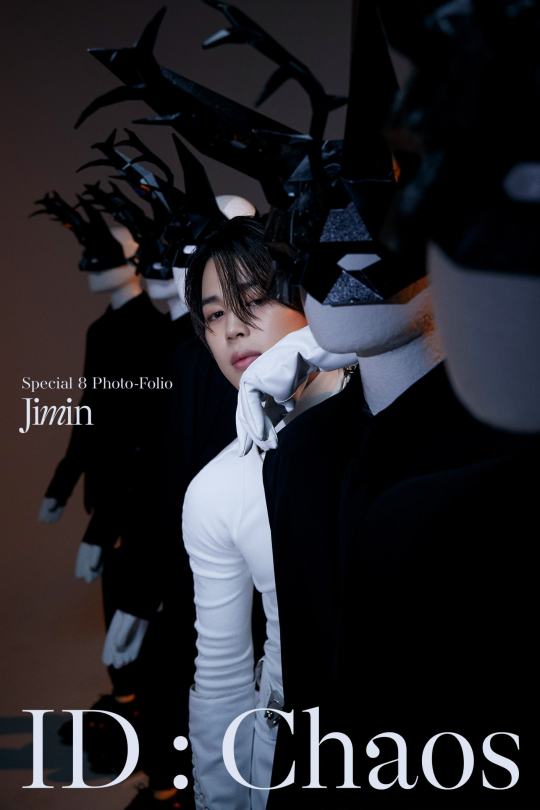
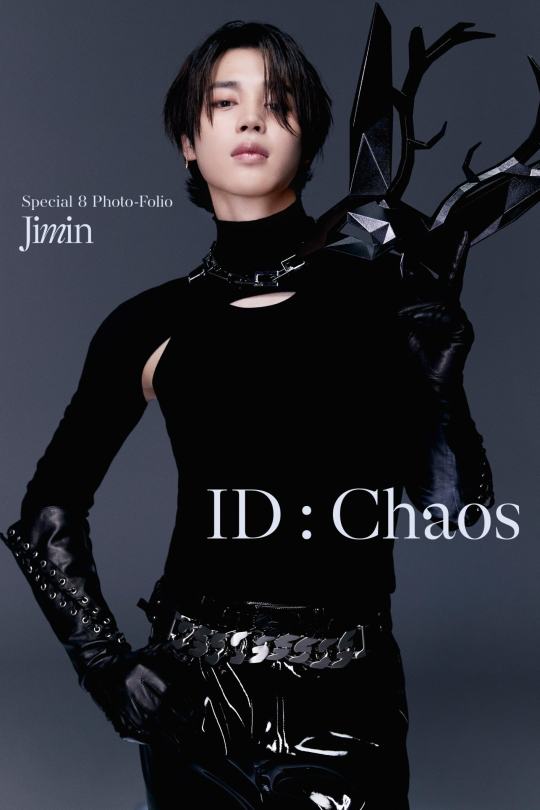
The last role Jimin takes on is that of the Dominant who uses fetish fashion and objects in order to show the side of his inner self that has to be in control once again, through masquerade. For Valerie Steele (2001), masquerade and sexual identity are interlinked, in which fetish fashion is now a way of constructing a sexual identity. In Jimin's photoshoot, he wears leather pants and gloves, completing the fetishist look with a mask that covers his eyes, a prop used by a dominatrix and a slave as well, each for different purposes. In Jimin's case, he acts the role of the dominant. This particular type of fetish representation, ''black leather, its feel, smell, and touch, as well as its associations to animal skin and its predatory impulses, induce sexual excitement with their connection to discipline and domination'' (Geczy, Karaminas, 2018). In this concept, Jimin presents himself as a sexual being, focusing on a very specific erotic imagery and role. Taking on the role of a dominant, he once again shows the need he has for control, a motif that has its more visible origins in Filter. It also shows he still needs to keep parts of himself hidden, perhaps offering a peak through disguise, on taking upon himself a persona through which he can communicate. Showing himself in a fetish fashion accentuates the theatrical and artificial construction of this part of his self, in which artistic expression becomes a safe method to do that.
As with Filter, and in the Light & Darkness concept, the mannequins are present here as well, introduced by Jimin as his other selves. They appear wearing a black suit and a mask, in a setting in which Jimin stands out, wearing white. It shows an objectification of self, of being able to look at various forms that are once part of him, but also can be seen as the filters through which others are seeing him. In this instance, Jimin takes on the role of the observer, while at the same time he's being watched, as he is surrounded by the mannequins – the former, artificially constructed selves.
A fragmented, controlled self?
Jimin's journey of self discovery is shown in this photo-folio through his gender performances. He finds a freedom in the context of artistic expression through the use of various roles he takes upon himself. His inner, raw self, as he explicitly mentioned in one of the teaser videos, is one that can be shown through disguise, which in turn, allows him to be in control of every narrative, of every role he plays, of the different forms of his hybrid masculinity. Jimin finds refuge in drag, in its subversion and exaggeration. The question is if his inner self is still kept hidden, a part that is not for public consumption to be analyzed and scrutinized, or its nothing but a fragmented self in which various personas coexist and which can rise to the surface as long as Jimin is completely in control of how he wants to be perceived?
List of references:
Marie Carter, The Butch Woman Inside James Dean or 'What Kind of Person Do You Think a Girl wants?' (2003)
Rebecca Kennison, Clothes Make the (Wo)man: Marlene Dietrich and 'Double Drag' (2002)
Veronique Fernandez, 'People Believe What They See': Clothing And Gender(s) in Victor/Victoria (2001)
Joanne Entwistle and Elizabeth Wilson eds., Body Dressing (2001)
Minjeong Kim and April Lopez, The deployment of gender for masculine balance: analyzing multi-platform K-Pop performances (2021)
Thomas L. Heacox, 'Idealized Through Greece': Hellenism And Homoeroticism in Works by Wilde, Symonds, Mann and Forster (2004)
Adam Geczy and Vicki Karaminas, Fashion and Masculinities in Popular Culture (2007)
Adam Geczy, Transorientalism in Art, Fashion and Film. Inventions of Identity (2018)
Ben Barry, (Re)Fashioning Masculinity: Social Identity and Context in Men's Hybrid Masculinities through Dress
132 notes
·
View notes